
Nicole Hensley was visiting North Carolina’s Outer Banks with her parents and sister in late spring 2001. At almost seven years old, she might have been into searching for sea glass in the sand or watching bottlenose dolphins ride the waves.
No no.
The Colorado Avalanche were going deep in the NHL playoffs, and Nicole couldn’t miss a moment, which meant her family couldn’t either.
“They wanted to go to dinner or the beach, and I’m like, no, and made everyone stay inside on vacation and watch hockey games.”
The Avs went on to beat the New Jersey Devils in the Stanley Cup finals that year, and Nicole thought that maybe she, too, would play in the NHL.
So when a neighbor kid asked if she wanted to shoot pucks in their suburban Denver cul de sac, she grabbed a stick and spent the rest of the summer shooting, passing, breathing the game. It was an easy, innocent decision when the neighbor kid’s dad invited her to try out for the team he coached.
“My parents are from Kansas City, so they didn’t know anything about hockey,” Nicole says. “Not a clue about what they were about to sign up for.”
Between the weekly rinkrat routine and the expensive annual churn through outgrown equipment, hockey was a whole new world compared to the t-ball, soccer and basketball that Nicole had played up to that point.
None of them could have imagined that world would open all the way up to Olympic gold, the first-ever Walter Cup trophy, and perhaps most consequential, a role in securing pay equity for women on the national team. Girls from the western U.S. just didn’t reach that echelon of hockey.
Like most young players, Nicole started out as a skater and took turns with teammates to be the game-time goaltender. She eventually gravitated to goalie full-time and continued playing on boys’ teams going into high school for no reason other than wanting to.
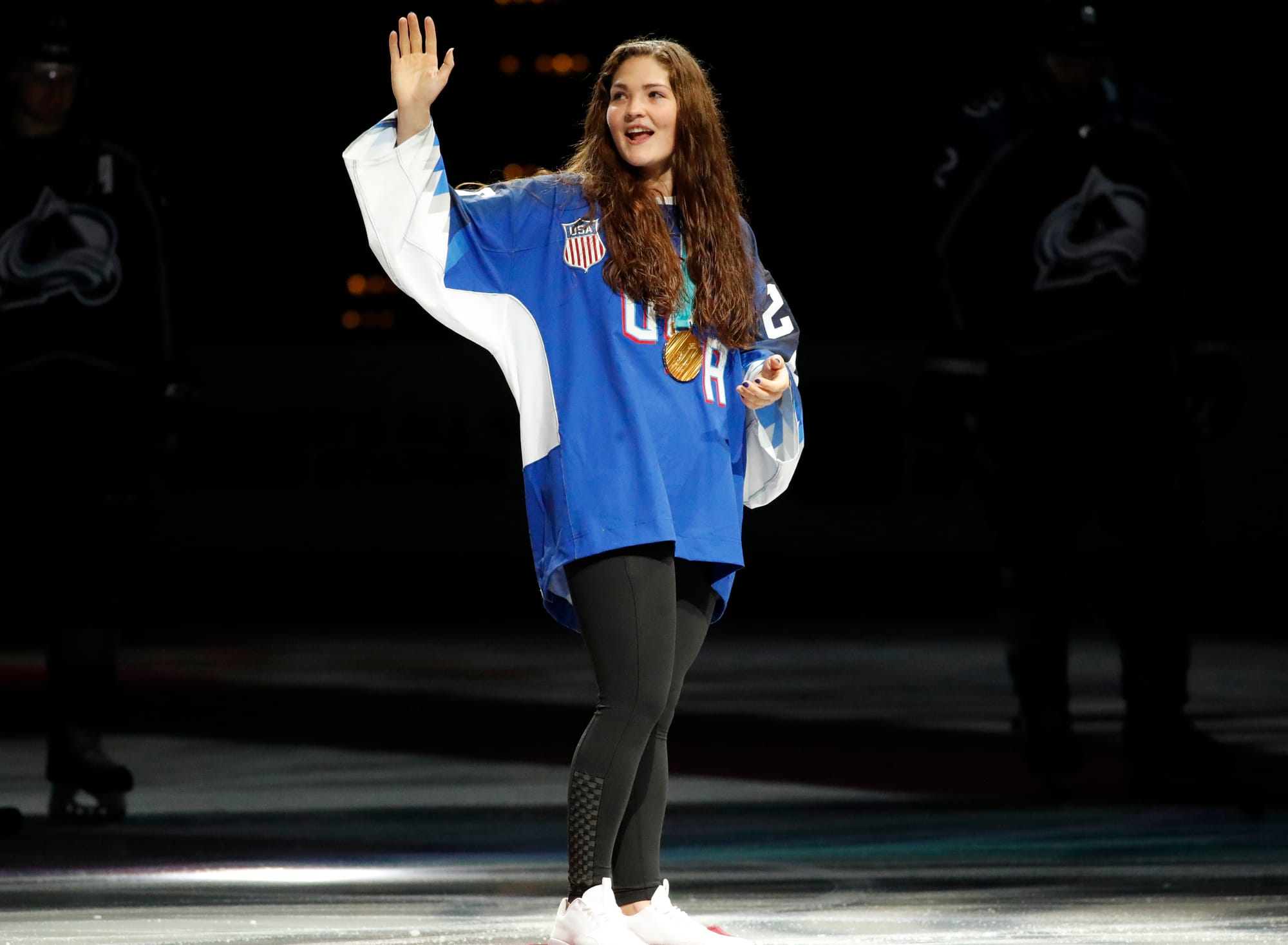
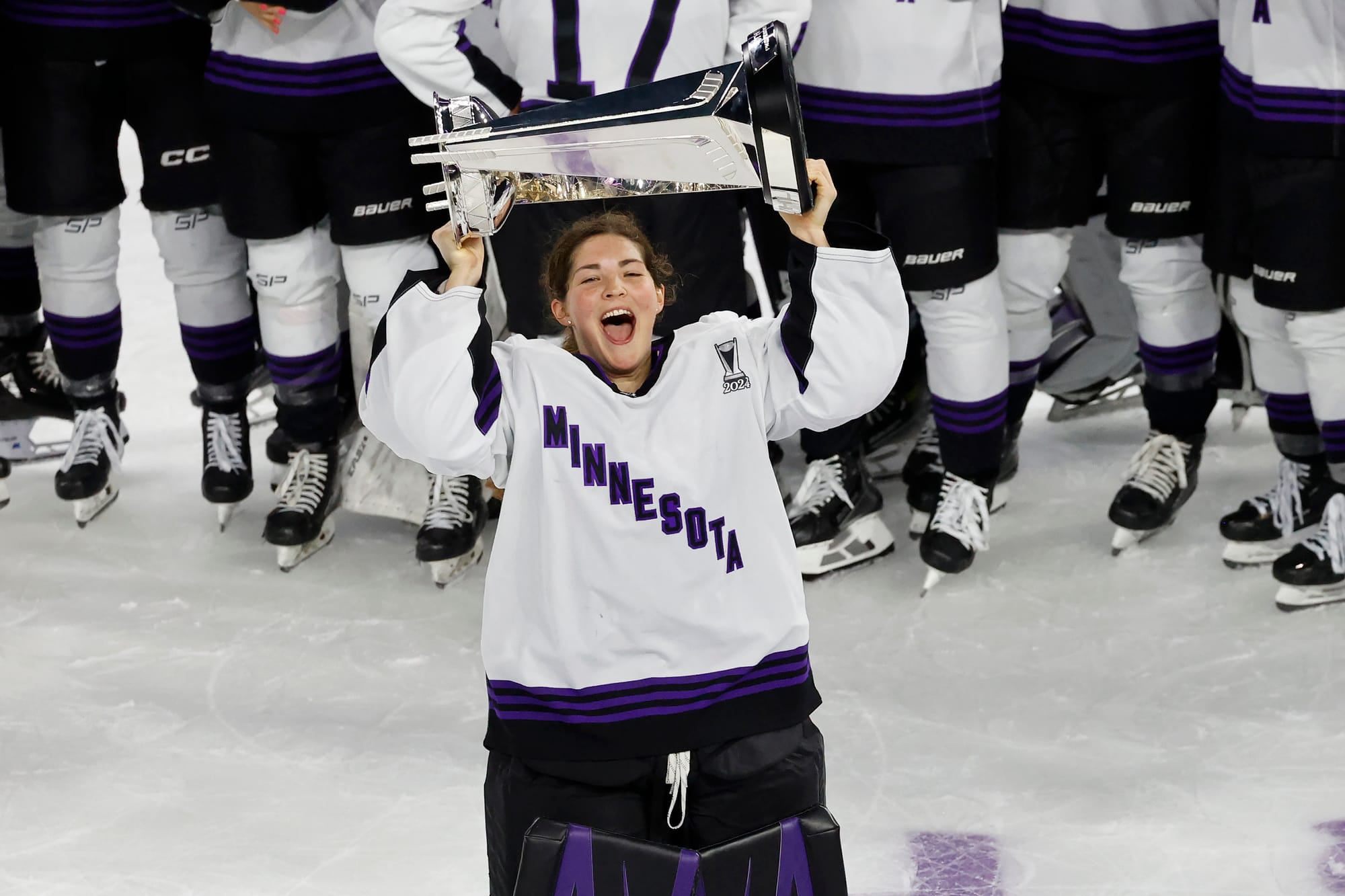
With medals and trophies as proof, Nicole Hensley proved that perseverance can pay dividends. [AP photos]
“It wasn’t like I was playing with boys because they were better. It was more, ‘These are my friends. I want to play with them.’”
But it put her at a disadvantage for college recruiting. She and her family didn’t know that the westernmost Division I college women’s hockey teams were in St. Louis or North Dakota. Or that she needed to be relentlessly pitching herself to coaches by email and phone. Or, crucially, that to even be seen by college coaches, let alone recruited, she needed to be playing in the girls’ tournaments, showcases and camps they scouted. At the time, those were almost exclusively in communities with well-established girls' hockey programs — Chicago, Boston, Detroit, Toronto, Minnesota.
And Nicole wanted to play not just college hockey but big-time college hockey at the University of North Dakota, where Jocelyne and Monique Lamoureux were tearing it up.
So in tenth grade, Nicole jumped from her boys' team to Colorado Selects, a girls' travel team that did play in the right tournaments and had a track record for placing players at Division I and III schools.
But tenth grade was so late to be getting onto coaches’ radars, especially for a goaltender — coaches don’t recruit for goalies every year since there are so few spots on the roster. Still, Nicole dutifully called and emailed to let them know where and when she’d be playing in tournaments.
“Every Division I school I talked to was like, ‘We don’t need a goaltender in your year.’ ‘You’re not tall enough.’ ‘You’re not good enough.’ It was all negative.”
She resigned herself to a D-III school in Plattsburgh, New York. But Marnie Hill, her Colorado Selects coach and a former Providence College assistant coach, wouldn’t hear of it.
“She said, ‘You’re not playing Division III. You’re a Division I goaltender. I’m going to fix this.’ Looking back, had I not had someone in my corner who really believed in me, I don’t know if I’m doing what I’m doing now.”
Hill made some calls and helped Nicole land at Lindenwood University outside of St. Louis. The program was transitioning to D-I and was well below UND’s level, but she’d take it.
She showed up ready to put in the work and earn playing time, just as her parents raised her.
“If the other goaltenders on our team were on the ice before or after practice, I would be out there too. I never wanted them to have an opportunity to get better when I wasn’t. For me, it was a mental edge thing, refusing to be outworked.”
She didn’t know it then, but she was slotted as a backup goaltender who likely wouldn’t get much playing time. Since the coaches didn’t recruit her, they didn’t really know her.
That changed when a puck fractured the starting goalie’s collarbone right before the start of Nicole’s freshman season. The day before Lindenwood was set to open the season at Ohio State, she found out she’d be starting both games.
They ended up being lopsided losses, 4–1 and 6–0, but the scores obscured the real story: Nicole had faced more than 100 shots, a grueling forward-back-up-down-up-left-right workload in sweat-soaked gear weighing maybe 30 pounds, and a gritty performance that made everyone pay attention.
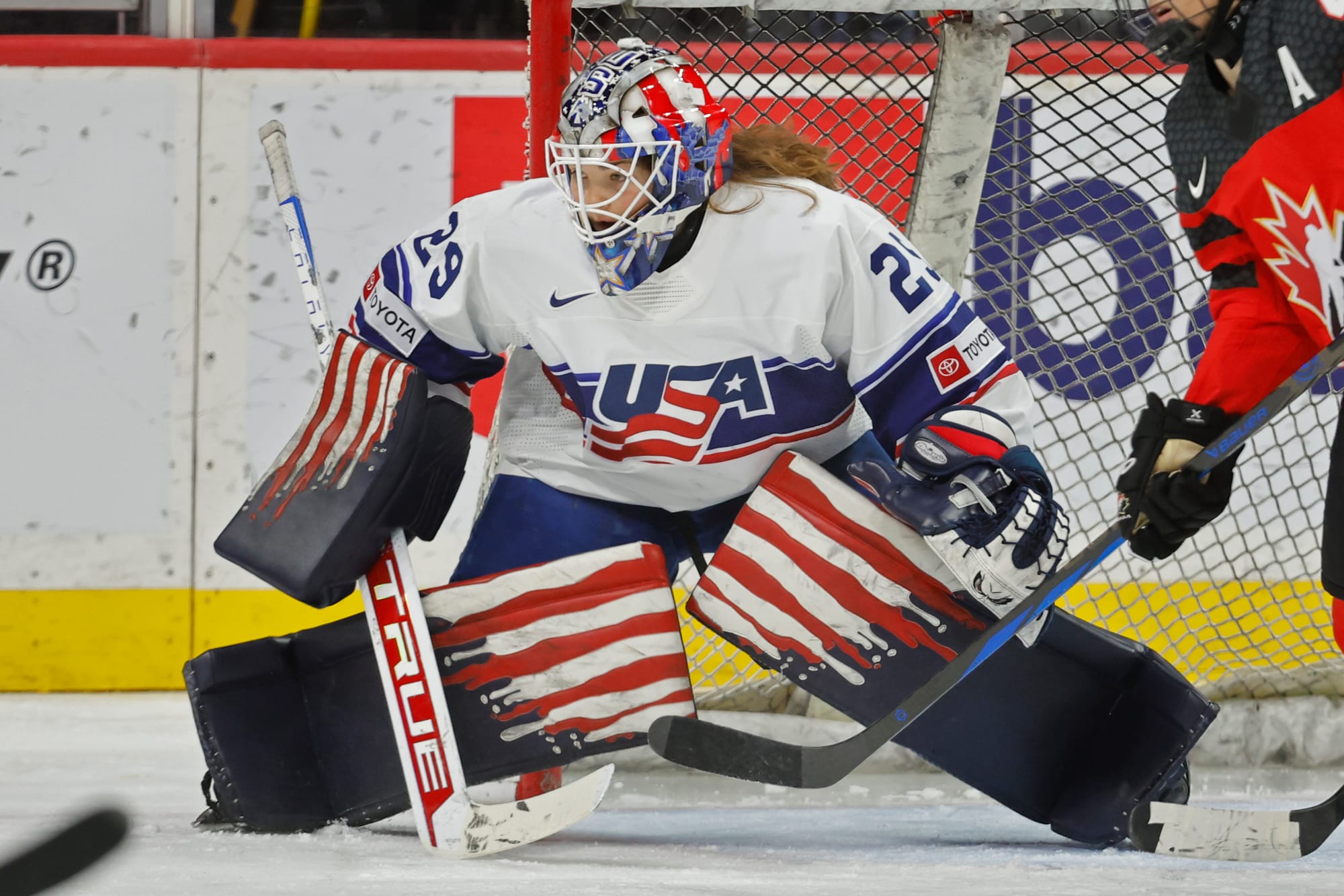
“I remember I had a friend on Ohio State, and I was sulking around after the game, and she was like, ‘Our whole team is talking about how good you are.’ And I thought, maybe I can do this.”
She continued to play well enough to make the net her own, even when the original starter returned to the lineup. Nicole had earned her ice time.
“You never know when your opportunity’s going to come,” she says. “I’m happy I had put in the work leading up to that moment to give myself a chance to perform well.”
As a new program, Lindenwood didn’t have the recruiting power of programs like Wisconsin, Minnesota, or the Boston schools. Expectations were low — no one thought Lindenwood would win many games.
Nicole continued to face an average of 40 shots a game, 10 to 15 more than is typical in a women’s college hockey game. It wasn’t great for the team’s record, but it advanced Nicole’s physical and cerebral development.
“The fact that I saw that many shots every single game gave me the opportunity to see every scenario over and over again. And if I let one in, I was like, I’m gonna have 45 more chances tonight.”

That’s exactly how she came to the attention of USA Hockey, the governing body of the U.S. Women’s National Team. In a playoff game freshman year, Nicole was in net against Robert Morris University. The game went to triple overtime, and Lindenwood lost 2–1.
Nicole had let in two shots … and stopped 90. That’s no typo. She faced 92 shots that day, and RMU assistant coach Brianne McLaughlin noticed. McLaughlin, a 2010 Olympic goaltender and then-NCAA Division I all-time record holder for saves in a career, called USA Hockey and said Nicole deserved a look.
That call was stunning for a couple of reasons. First, Nicole had never been in the USA Hockey system for the same reasons she missed out on college coaches’ interest: as a Western kid, she wasn’t part of the girls' hockey machinery of the Midwest and East Coast.
Second, as part of the National Team, McLaughlin was in the pool of women compensated — nominally at that point — by the U.S. Olympic Committee. (More on that in a bit.) In alerting USA Hockey to Nicole’s talent, McLaughlin was also alerting them to someone who could potentially take her spot on the National Team.
“It’s crazier than it seems,” Nicole says. “She was still a goaltender in the pool. She didn’t have to make that phone call, but I will always be grateful that she did.”
---
Soon, USA Hockey invited Nicole to camps for the top 12 college and top 12 high school goalies in the country. These camps are USA Hockey’s system for determining which players will represent the U.S. in international U18 and U22 tournaments — and potentially the Olympics.
When Nicole made the U22 National Team in 2014 and 2015, she came in with the same mentality she brought to Lindenwood: “Alex (Rigsby) Cavallini is the starter. Alex plays for Wisconsin; I’m gonna follow her around and do whatever she does.”
She has remained in that company ever since. In her senior year of college, she was chosen to be the third-string goalie to represent the U.S. at the 2016 IIHF Women’s World Championships, a tournament second only to the Olympics in prestige.
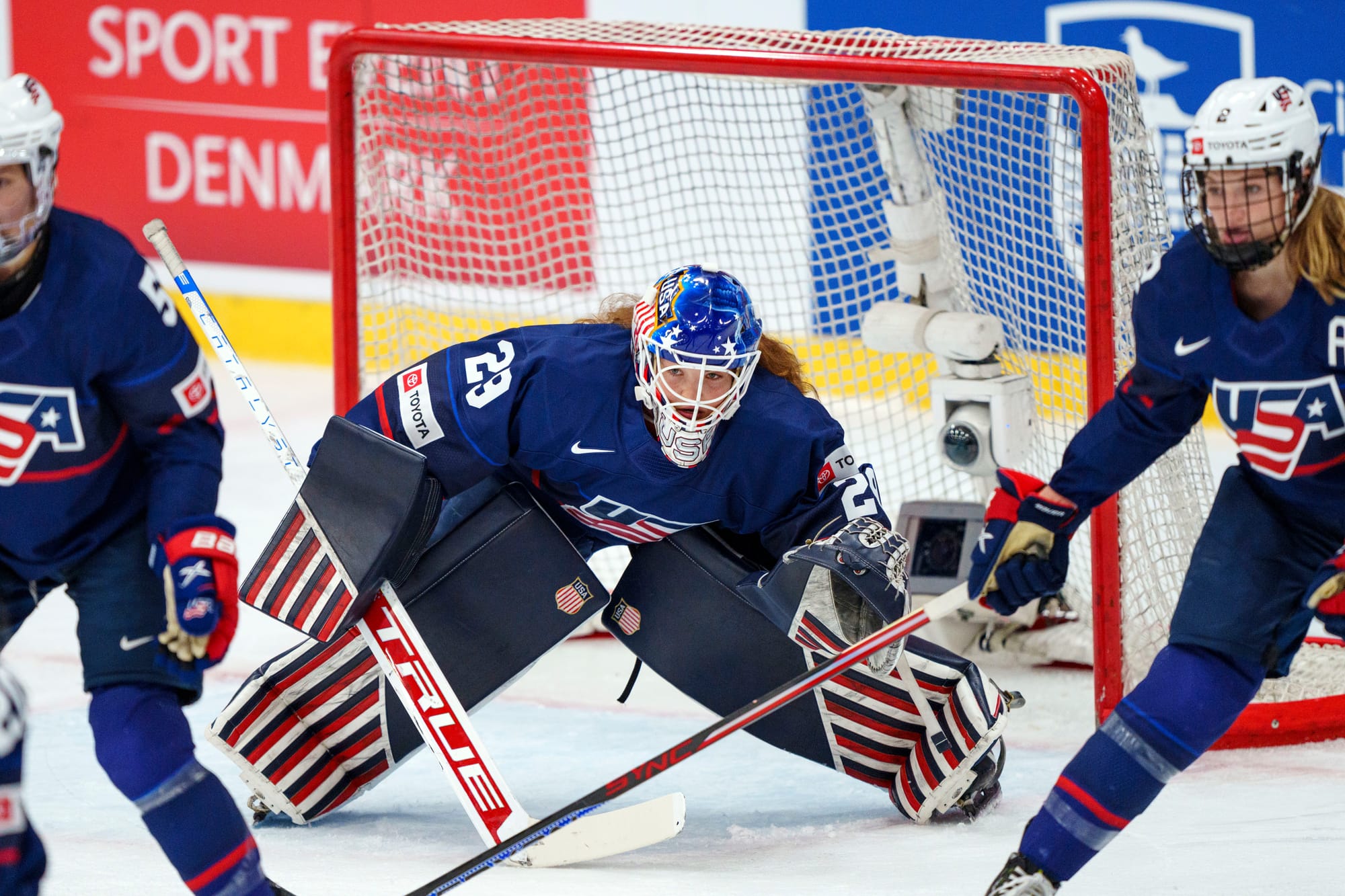
“I didn’t think I would dress a game at that point or that I’d put on the sweater even, but you’re on a team with the Hilary Knight and the Lamoureux twins. I was elated to be in the same conversation.”
She did play a game in the preliminary round, earning a shutout against Russia and mad celebration from her teammates.
“It shows you the culture we have with that team. They treated me and that win like it was a big deal to them. That meant a lot to me.” Team USA finished the tournament with its third straight championship.
That solidarity made a historic statement a year later when the Women’s National Team took a stand for equitable pay.
While the Men’s National Team earned a living wage, most of the women had to cobble together part-time jobs to support themselves and train for their sport, including Nicole, who stayed at Lindenwood to coach part-time after graduating in 2016.
Nicole and her teammates had had enough of the double standard. After years of championships and months of stalled negotiations with USA Hockey, they effectively went on strike for equitable wages, training stipends, travel and insurance provisions and more.
And they did it two weeks before the Michigan-hosted 2017 World Championships.
A Team USA boycott would have rocked the tournament and USA Hockey. The pressure was intense enough and the timeline tight enough that USA Hockey attempted to recruit replacement players from newly hatched professional leagues as well as college, high school and even recreation-league teams. Every player stood with the women of Team USA.
“Those people are the real heroes,” Nicole says. “They could have seen this as an individual opportunity, but they knew it was bigger than any one person.”
Three days before Worlds started, the Women’s National Team and USA Hockey agreed to a four-year deal that guaranteed, among other things, a living wage — $70,000 a year — and a chance to make extra money for Olympic gold.
Remember what happened in the 2018 PyeongChang Games?
Nicole made that Olympic team and did all she could to support starting goalie Maddie Rooney and the rest of her teammates. And just as she did at the 2016 Worlds, she played one game, shutting out the Olympic Athletes from Russia 5–0. Team USA went on to win gold in a heart-stopping shootout against Canada.
You might think that experience secured her immediate future. She was only 23 after all, and living in a time when women on the National Team could play professionally and have the financial security of a living wage.
To stay sharp for the National Team, Nicole moved to New York in the fall of 2018 to play for Buffalo Beauts in the newly formed National Women’s Hockey League. Not long after, though, she found out she’d been cut from the National Team and USA Hockey funding.
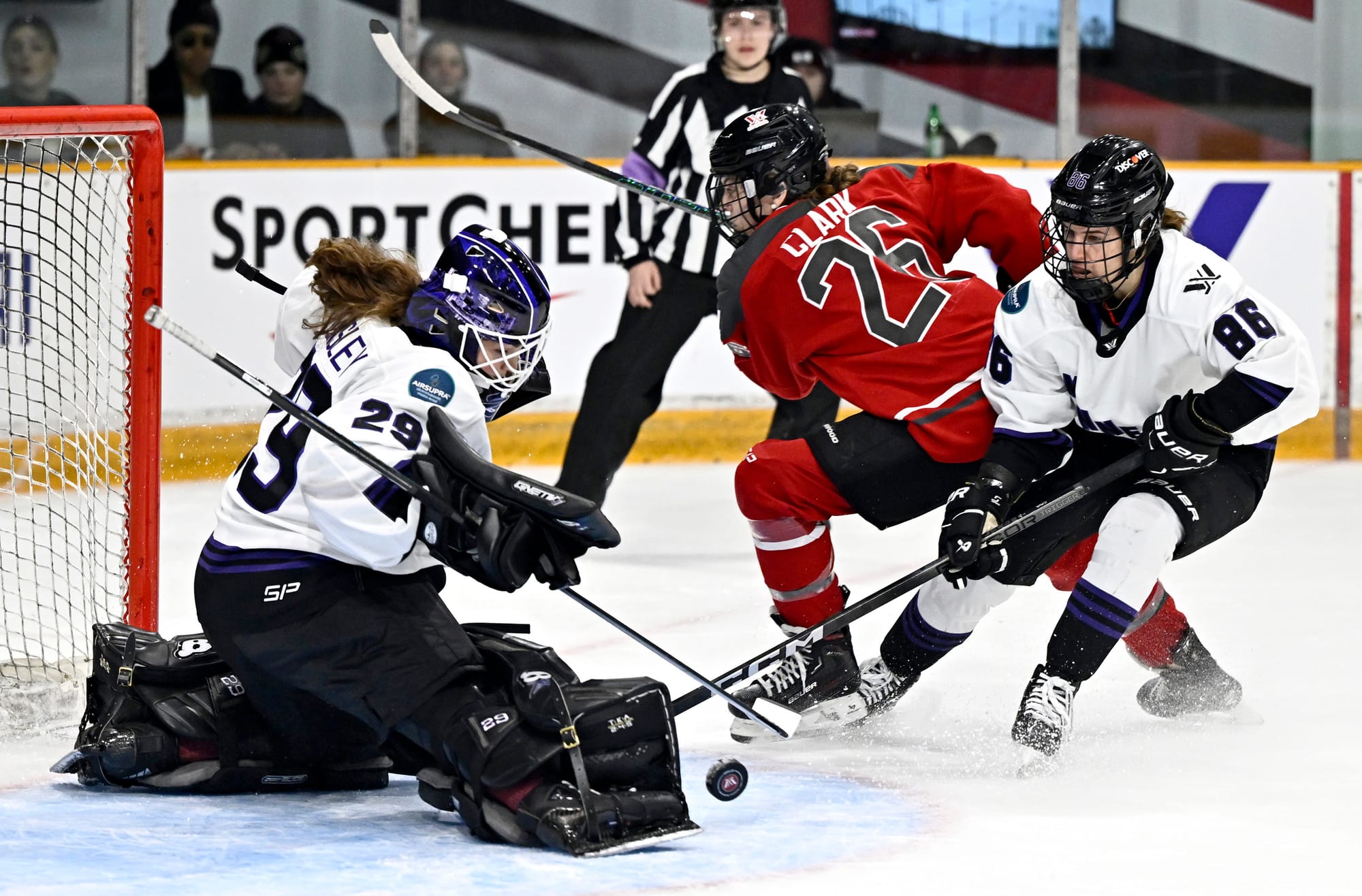
To this day, she doesn’t know what happened or why. The team’s general manager and head coach were no longer with the team, so there was no one to ask. That left Nicole one option: to drive down to Colorado Springs while she was home for Thanksgiving and talk face-to-face with USA Hockey Executive Director Pat Kelleher.
“I told him ‘I’m going to work my butt off to get back in this program.’”
Kelleher told her it wasn’t his job or place to weigh in on roster decisions, but Nicole was invited to the next National Team camp and gutted her way back onto the roster.
She hasn’t looked back. She made the 2022 Olympic and women’s Worlds teams in 2021, 2022, 2023 and 2024. In 2022, she was named best goaltender of the tournament.
And just this year, in the inaugural season of the Professional Women’s Hockey League, Nicole and her Minnesota teammates hoisted the Walter Cup — a testament not only to winning the league’s first championship but progress toward professional sustainability.
And to think it all started with a seed planted by the Stanley Cup playoffs and nurtured by a bunch of no’s.
“I was literally told so many times in my career, ‘No.’ Almost no Division I school wanted me. Some D-III schools didn’t want me. I was only going to be a backup. I was cut. And I just think there are people who can do so much with a chance.
“You just earn it and take your opportunity when it comes, and you believe in yourself before you can expect anyone else to believe in you.”
